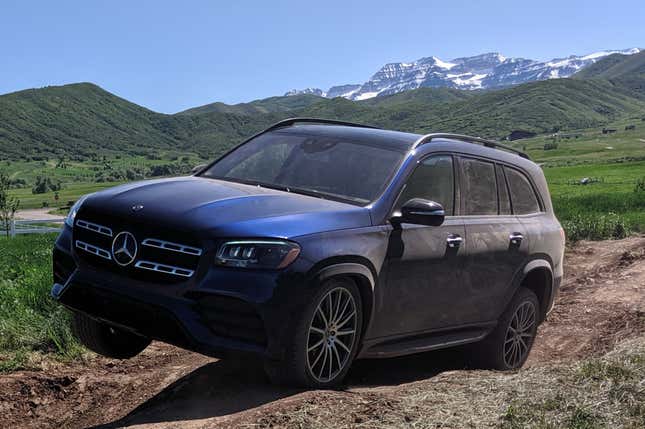The 2020 Mercedes-Benz GLS follows in the footsteps of its sister vehicle, the S Class, otherwise known as, at any given time, the best car in the world. It’s part of Mercedes’ family of SUVs, including the GLA (sister car of the A Class), GLC (C Class), and GLE (the naming convention should be obvious by now). But the GLS, now in its third-generation, wants to be the best SUV in the world.
(Full Disclosure: Mercedes flew me to Utah and gave me food and put me up in a hotel and let me drive both versions of the GLS. )
And for a base price of $97,800 for the V8 version or $75,200 for the inline six, it probably should be the best SUV in the world, or at least challenge for the title. Its competitors are cars like the Cadillac Escalade, the Infiniti QX80, the Lexus LX, the BMW X7, and the Lincoln Navigator. It’s a somewhat crowded field but I feel like the people who buy the cars will be ultimately pretty self-selecting. Anyway! Onward.
What Is It?
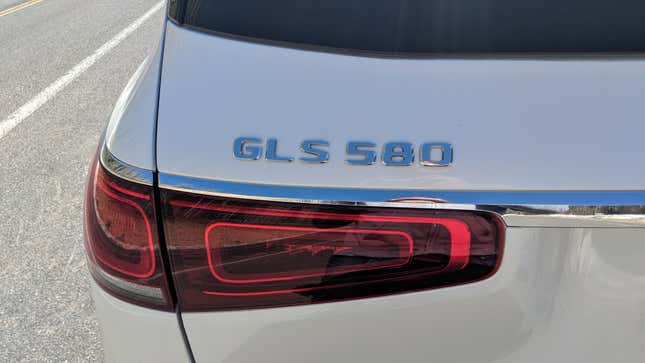
It’s a big SUV. Three rows. It’s 205 inches long. The base price is over $5,000 more than the outgoing generation, which is honestly a pretty big leap but one that Mercedes tries to justify with a host of new features, including a better sound system, a bigger screen, Android Auto and Apple CarPlay, wireless charging, remote start, a new parking assist system, and blind spot assist system, among about 19 million other features.
Mercedes has thrown everything it can at this car, including a lot of USB ports, and even USB-C for those among us (hello) who need that to charge their phones. It will come with heated and cooled cupholders in both the front and rear if you want. There are so many features, in fact, that it feels like actual work to utilize them all, and actual work to remember everything that exists. You feel responsible for it all. Other cars make you into a driving hero. The GLS makes you into a god, for better or for worse.
Take the car wash mode, for example, which folds the mirrors in, closes all the windows and the sunroof, lifts the car, and shuts off the rain sensors so the wipers don’t activate. This is neat! But should this even exist? Should you ever take your car to an automated car wash, even? The answer is no.
Specs That Matter
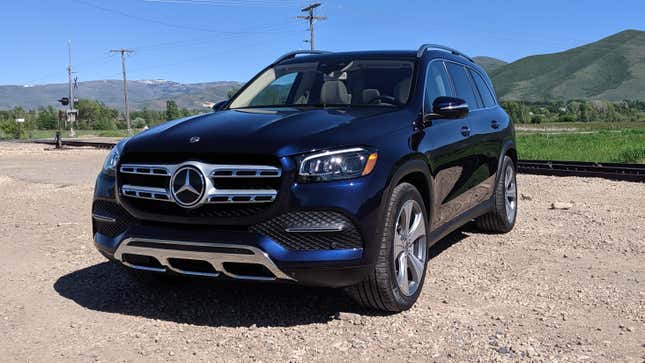
There is the GLS 450, which comes with the inline six-cylinder, and the GLS 580, which comes with the V8. Both are also mild hybrids. The 3.0 liter six-cylinder makes 362 horsepower and the 4.0-liter V8 makes 483 horsepower, according to Mercedes. Both send that power through a nine-speed automatic transmission, which was entirely unnoticeable when I drove it, shifting seamlessly. (I expect an AMG version as well and have asked Mercedes if there will be one, but it said it would not comment on future product.)
One of the big new things is the car’s E-Active Body Control system, an intelligent suspension for which I have a few things to say about later. The electric motor is intended to boost fuel mileage (EPA figures not available just yet but I would expect in the range of 15-20 mpg combined) and also give a small (21 horsepower) power boost when called upon.
The GLS also has all the semi-autonomous features you would expect on a car this expensive and one intended to be about as comfortable as possible. That includes lane keeping assist, automatic emergency braking, and stop-and-go traffic assist. That also includes an active speed limit assist, which will adjust your speed automatically when the speed limit changes.
What’s Great

For a car intended to be very comfortable, the handling is great. Mercedes set us up on a dirt course which was honestly much, much more intense than it needed to be. It took a few hours, and included a hill climb and, then, a descent down a rocky surface, all of which should’ve been a little perilous but with which the GLS handled with the smoothness of a much smaller car.
The turning radius, for example, was incredibly tight around curves, almost shockingly so for a car that feels like huge on the highway. But as soon as we took it off road the GLS ripped off its suit and turned into a proper athlete. When we hit the descent, the car’s Downhill Speed Regulation kept us at 2 mph as it nimbly navigated some steep dirt and rocks.
On pavement, it was just as good, in all its various modes—a sporty mode, an eco mode, an extra sporty mode, etc. By far the most impressive of these modes was the Curve mode, which takes full advantage of the car’s “intelligent” suspension, which can spring and damp individual wheels to conditions. This is the E-Active Body Control suspension at work.
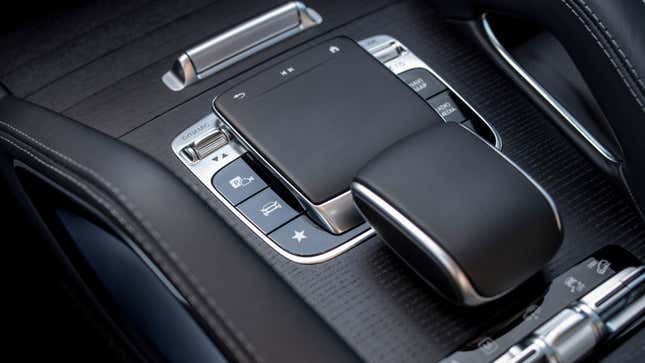
In practice this means is that when you begin to turn the wheel you can feel the car lift a little and orient itself toward the curve, in a way that is at first unsettling, but after awhile feels very natural. The unsettling part isn’t a feeling of a danger, more a feeling of uncharted territory, since you’re not used to a car helping you out as such in this way.
Once you get used to it, you fall in love. It’s you and the car, a team, tackling life’s problems (curves) as one.
The other modes are basically what you’d expect, though I will say there was a notable difference with the sport modes, in that the throttle response—even with the inline six-cylinder—was immediate. Which is good for a car that probably weighs nearly 6,000 pounds. (Mercedes said that the official curb weight numbers would be released closer to launch.)
What’s Weak
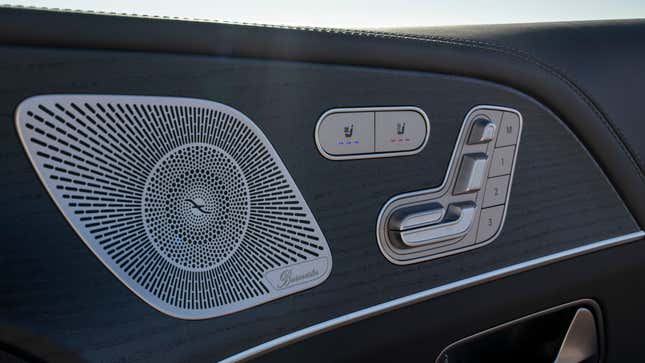
The interior is extremely busy, as the interiors of big and feature-laden SUVs tend to be. It also includes a touchscreen, which is bad. Surely someone can design an interior to a big, expensive car that doesn’t have ten million buttons? I don’t expect the Germans to ever do that, but also it seems like a thing that can be accomplished, at least in my lifetime.
The touchscreen runs on Mercedes’ own MBUX software, which was good enough and can also be voice controlled. That said, if you’re spending this much money on a car, the interior controls shouldn’t be a bear to figure out, even if it’s true that once you have everything down it’s all pretty intuitive.
Also, seems like too many vents.

And the semi-autonomous features work fine, but remain an issue in general nonetheless.
Early Verdict
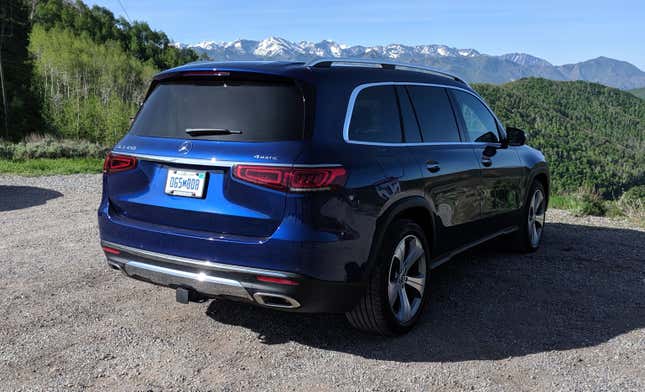
The GLS has giant shoes to fill, or at least reputationally so, if you want to judge it by the standards of the S Class, as Mercedes explicitly compared it to throughout the drive. The GLS is the S Class, it said, but the SUV version. As such, I think it goes a long way in filling those shoes, at least with all of the options.
Should you get the six-cylinder version or the eight? Probably the eight, since surely anyone willing to spend $75,000 on a new car is probably also willing to spend $100,000 on a new car, or even $115,000 on a new car. If you get the GLS, you should absolutely go all in and get it with all the options, there’s no real point otherwise. The GLS, Mercedes said, will be in dealerships by the end of 2019.
At the very least, you will never be bored. Someday a few years from now, you will discover a new feature that you hadn’t previously known existed. It will be something you had initially glossed over, a soda dispenser, perhaps. And before you know it your back has been massaged, you have a cold drink, you’re actually more comfortable than you would be anywhere outside of your own bedroom. And you’re driving.
